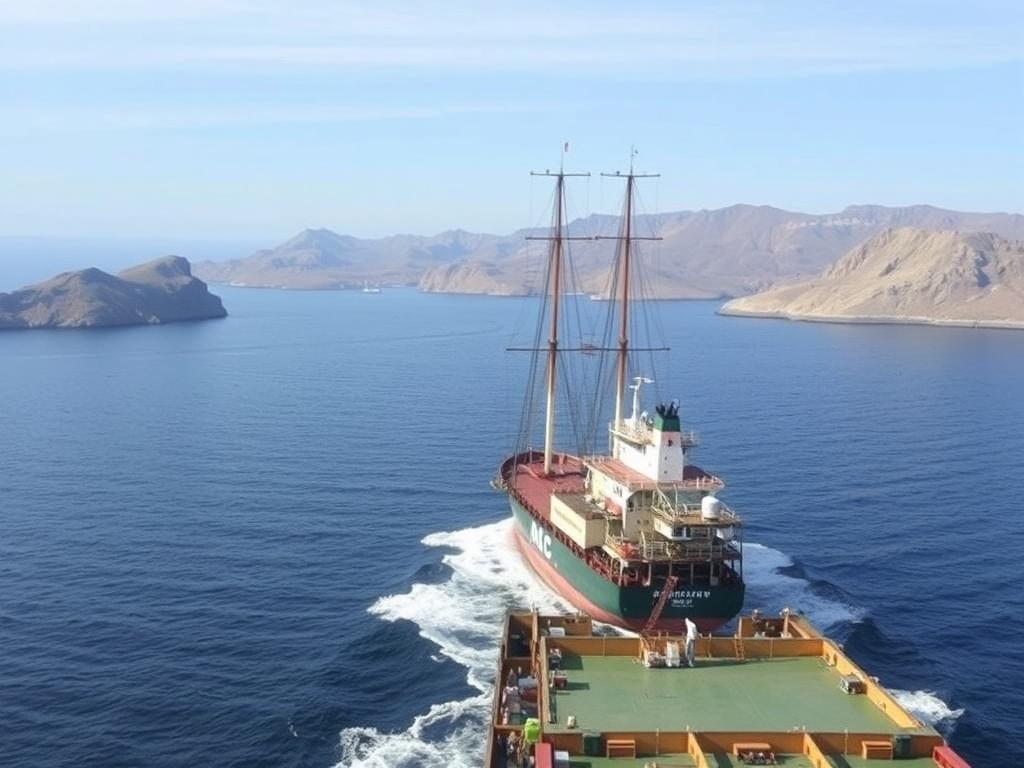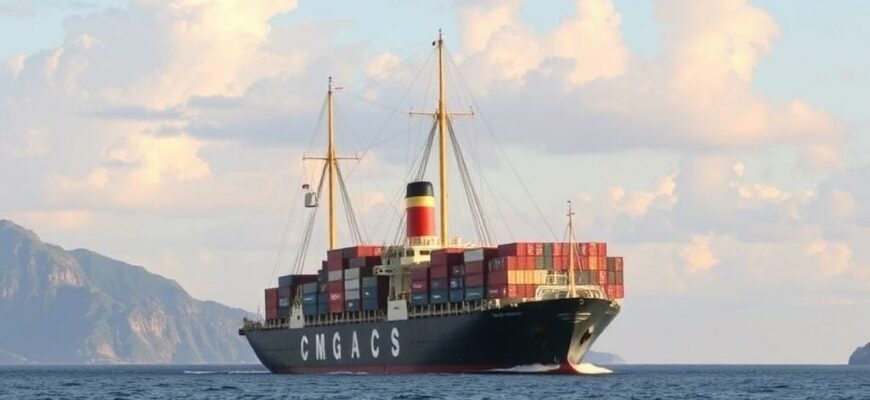When we think about traveling across continents, images of airplanes zooming overhead or luxury cruise liners gently cutting through the waves often come to mind. Yet, there is a fascinating and unique way to undertake a journey that many people overlook: crossing continents by cargo ship. This mode of travel offers an extraordinary adventure that’s quite unlike any other form of transportation. It promises an unmatched blend of tranquility, discovery, and insight into the global shipping world that keeps the world connected. In this article, we’ll explore what it means to embark on a voyage across continents by cargo ship, why more travelers are choosing this unique experience, and how you can plan your own journey.
What is Crossing Continents by Cargo Ship?

Traveling across continents by cargo ship means boarding a merchant vessel that primarily transports goods across vast oceans. Unlike cruise ships, cargo ships are not designed for tourism but for commercial purposes—often laden with containers of everything from electronics to coffee beans. However, these vessels sometimes offer limited space for a small number of passengers, presenting a rare opportunity to experience life at sea in a way few ever do.
This unique type of travel is more about the journey than rushing to a destination. As cargo ships weave their way across the globe, passengers get to witness breathtaking sunrises over endless water, encounter remote ports rarely seen by tourists, and experience the majesty of the oceans from a completely different perspective.
The Growing Appeal of Cargo Ship Journeys
You might wonder why anyone would choose to cross continents by cargo ship instead of by plane or even cruise ship. Interestingly, this unique experience has been gaining popularity thanks to several appealing factors. First, it is an eco-friendly alternative to flying, with less carbon footprint per passenger. Secondly, the slower pace encourages mindfulness, relaxation, and introspection, a break from the hectic speed of modern life.
Many adventurers are also drawn to the authenticity and rarity of the experience. Unlike crowded airports or tourist-packed ports, cargo ship journeys are tranquil and offer genuine interactions with the crew and learning about the workings of international maritime trade. Furthermore, it’s an excellent way to avoid the stresses of typical travel like security lines, baggage limits, or cramped airplane seats.
Understanding Life Onboard a Cargo Ship
Life on a cargo ship is vastly different from other types of travel. These ships are primarily designed for functionality and efficiency, so passenger amenities tend to be basic but sufficient. The number of passengers is small, often limited to 12 or fewer, which fosters a close-knit community atmosphere onboard. This intimacy leads to meaningful conversations and shared experiences as you cross oceans alongside a diverse crew.
Daily life on board is governed by the ship’s schedule, which revolves around cargo operations and navigation. However, passengers find their own routines, usually involving plenty of reading, writing, watching the sea, or simply relaxing. Some ships have gyms, libraries, and common areas, but entertainment is generally self-provided. Importantly, the crew is known to be warm and welcoming, eager to share stories about the ship, the sea, and their travels.
A Typical Daily Schedule on a Cargo Ship
| Time | Activity | Description |
|---|---|---|
| 7:00 AM | Breakfast | Freshly prepared meals by the onboard cook, often communal. |
| 8:00 AM — 12:00 PM | Relaxation & Exploration | Passengers can enjoy reading, taking walks on deck, or chatting with crew. |
| 12:00 PM | Lunch | Typically homemade meals reflecting the cook’s background and local ingredients. |
| 1:00 PM — 5:00 PM | Work & Ship Operations Observation | Passengers can observe navigation or help with non-critical tasks, under guidance. |
| 6:00 PM | Dinner | A final meal of the day, often a social occasion on ship. |
| 7:00 PM onwards | Stargazing & Free Time | With little light pollution, evenings are perfect for stargazing or contemplation. |
Choosing the Right Cargo Ship for Your Journey
Not all cargo ships welcome passengers, so selecting the right vessel is crucial to having a rewarding crossing. Some ships primarily carry containers, while others include bulk carriers or specialized vessels. When seeking a voyage for crossing continents by cargo ship, it is important to consult companies that organize these unique trips.
There are reputable agencies and services that connect travelers with ship owners who allow a few paying guests onboard. These agencies handle all necessary paperwork, including visas and maritime permissions. The availability of trips varies greatly, often dictated by shipping routes and cargo schedules.
Factors to Consider When Booking
- Route: Verify that the ship crosses the desired continents or ports of interest.
- Duration: Trips can last from a few days to several weeks or months.
- Accommodation: Cabins are typically simple but should be private and comfortable.
- Facilities: Check for availability of amenities such as Wi-Fi, laundry, and recreational areas.
- Cost: While not cheap, cargo ship passages are often competitively priced compared to cruise ships.
- Insurance & Safety: Ensure the voyage includes proper travel insurance and complies with international safety standards.
The Most Popular Routes for Crossing Continents by Cargo Ship
Crossing continents by cargo ship means choosing routes that commercial carriers regularly operate on. Some iconic routes are favorites because of their cultural and natural highlights or the length and variety of the passage.
1. Europe to North America
The transatlantic crossing remains a classic, taking passengers from ports in Europe such as Hamburg, Rotterdam, or Antwerp to New York, Charleston, or Halifax. The journey can take 10 to 20 days, depending on speed and stops.
2. Asia to Europe (via Suez Canal)
This route links Asian economic hubs to European markets, passing through the Suez Canal—an engineering marvel. It offers an experience of diverse weather zones and stops in ports rich with history and culture.
3. Australia to Asia
Connecting Australia’s ports with Southeast Asia, this route allows travelers interested in exploring vibrant cities and exotic cultures to experience a vast change of scenery.
4. Panamax Routes (Caribbean to Central America)
A popular shorter route that enables voyagers to see smaller ports and island life in the Caribbean, with relative ease and comfort.
Sample Route Overview
| Route | Distance (Nautical Miles) | Approximate Duration | Main Stops |
|---|---|---|---|
| Europe to North America | 3,000 — 3,500 | 12 — 20 days | Rotterdam, Southampton, New York |
| Asia to Europe (via Suez Canal) | 7,000 — 8,500 | 20 — 30 days | Shanghai, Singapore, Port Said, Rotterdam |
| Australia to Asia | 3,500 — 4,000 | 10 — 15 days | Sydney, Jakarta, Singapore |
What You Need to Know Before You Book

Traveling across continents by cargo ship isn’t like booking a conventional vacation. There are several practical considerations to keep in mind to ensure your voyage is smooth and enjoyable. Firstly, flexibility is essential. Cargo schedules can change due to weather, port congestion, or mechanical issues, so the arrival and departure times may vary unexpectedly.
Secondly, the paperwork. Passengers must meet maritime regulations, including medical certifications and proper visas for ports of call. Some trips require a medical fitness certificate since onboard medical facilities are limited.
Packing smartly is another consideration. Space is limited, and laundry options might be sparse. Essentials include sturdy clothing for both warm and cold weather, seasickness remedies, entertainment, and personal care items.
Finally, consider the overall cost. While often more affordable than luxury cruises, the price is not insignificant. In addition to the fare, budget for insurance, transfers to and from ports, and any personal expenses onboard.
The Unique Advantages of Cargo Ship Travel
What sets crossing continents by cargo ship apart is the ability to disconnect from the rush of modern life while immersing yourself in an extraordinary lifestyle. Here are some notable advantages:
- Slow Travel Experience: Allows deeper connection with the journey, carrying a sense of old-world adventure.
- Environmental Impact: More sustainable than flying, making it ideal for eco-conscious travelers.
- Intimate Community: Small group size means more meaningful interactions with crew and fellow passengers.
- Access to Rare Destinations: Ports that are off-the-beaten-path and rarely accessible to tourists.
- Insight into Global Trade: Learning about cargo operations offers a unique perspective on how goods move worldwide.
Challenges and Considerations
Of course, no journey is perfect, and crossing continents by cargo ship has its own set of challenges. The main one is patience. Because cargo shipping schedules prioritize goods, delays are normal. You give up rigidity for adventure, which means being mentally prepared for uncertainty.
Amenities aboard are minimal. Passengers should not expect the luxury or entertainment options provided by cruise ships. Motion sickness is real for some travelers, so adequate preparation is critical.
Connectivity is limited; Wi-Fi is usually slow and expensive. This can be a benefit for those looking to unplug, but a drawback if needing regular contact with family or work.
Tips for Making the Most of Your Cargo Ship Voyage
If you’re thinking about experiencing the magic of crossing continents by cargo ship, here are some tips to get the best out of your trip:
- Research thoroughly: Talk to agencies specializing in cargo ship travel and read accounts from previous travelers.
- Pack wisely: Bring multi-use clothing, seasickness medicine, entertainment, and a good camera.
- Embrace the journey’s pace: Use the quiet time for reflection, writing, or learning new skills.
- Engage with the crew: Show curiosity and respect; crew members often have incredible stories about life at sea.
- Stay flexible: Weather and cargo needs can shift plans suddenly; patience is key.
The Future of Traveling by Cargo Ship

As the world continues to seek more sustainable, meaningful ways to travel, cargo ship crossings are attracting a growing number of curious explorers. With rising concerns about climate change and overtourism, the slow travel movement aligns perfectly with the ethos behind these unique voyages.
Technological advancements may improve passenger comfort and connectivity, making the experience accessible to more people. Meanwhile, the global shipping industry is unlikely to slow down, guaranteeing that cargo ship routes remain a viable alternative to more conventional travel modes.
How to Get Started
If this unique experience excites you, the first step is to connect with companies specializing in cargo ship travel. There are resources online that offer booking options, trip planning advice, and traveler testimonials. From there, plan your travel documents, pack carefully, and prepare for an adventure unlike any other.
Conclusion
Crossing continents by cargo ship offers an unparalleled travel experience, blending the excitement of adventure with the serene pace of life at sea. It opens doors to unique destinations, authentic cultural encounters, and a rare glimpse into the world of maritime trade. Though it requires flexibility, patience, and a spirit of exploration, the rewards are immense—providing travelers with a deep sense of connection to the oceans and the global community. For those seeking a journey that transcends the typical tourist route, crossing continents by cargo ship delivers a fascinating, enriching, and truly unique travel story worth telling.









